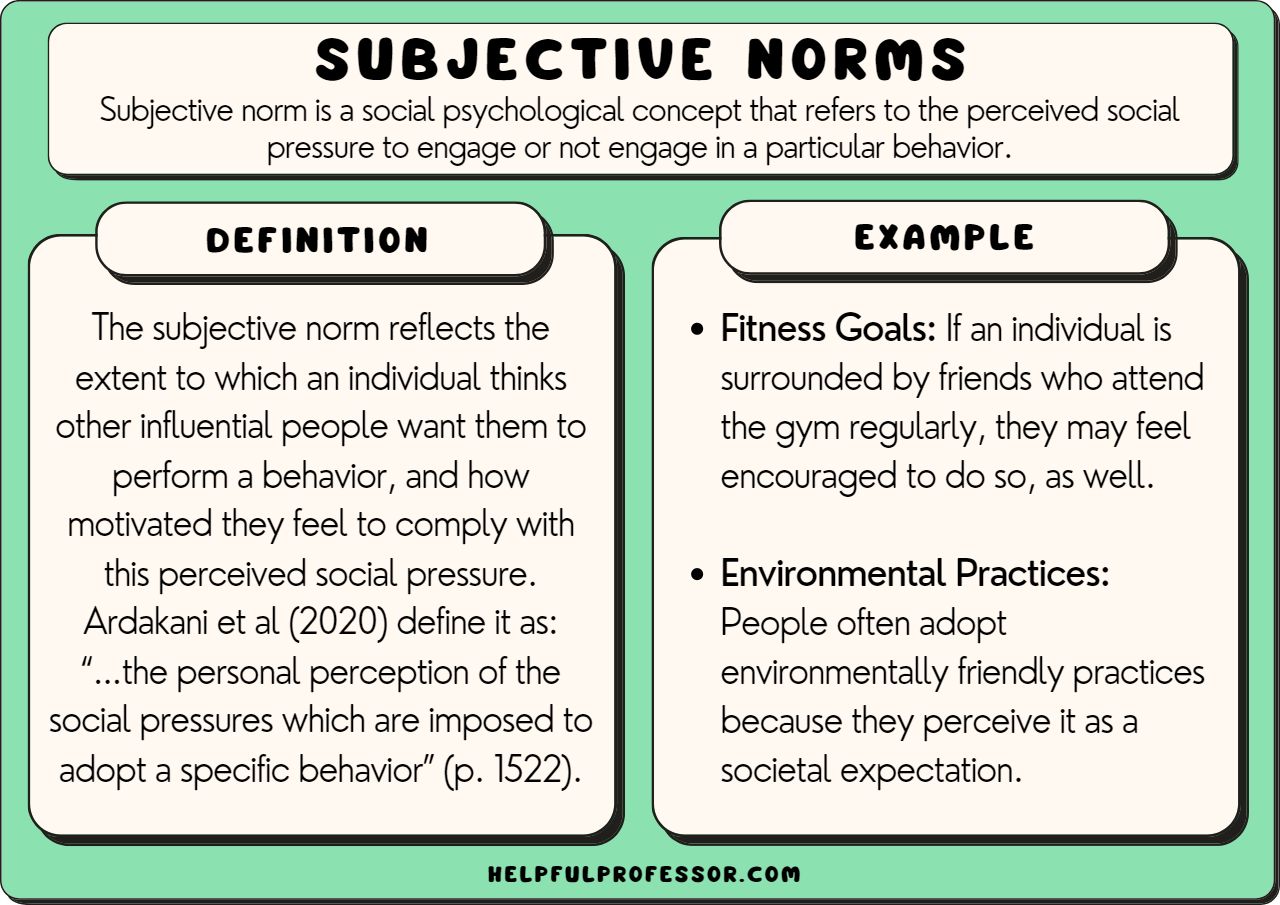Picture this: you’re at a bustling coffee shop, eager to grab your morning caffeine fix. As you approach the counter, a subtle sense of unease washes over you. You’re not sure if you should order first or wait for the person behind you to, or if this is the right queue for your desired beverage. It’s a seemingly simple scenario, but it reflects the silent power of social norms, those unwritten rules that guide our behavior and define our social interactions.

Image: helpfulprofessor.com
Throughout our lives, we navigate a complex web of social expectations. These norms, often unspoken and deeply ingrained, shape our choices, influence our actions, and ultimately dictate how we experience the world around us. But understanding these invisible threads can empower us to engage more effectively with others and navigate our social environments with greater confidence and awareness.
Diving Deeper into Norms: A Case Study
To truly comprehend the impact of social norms, let’s delve into a concrete example: the practice of queueing. In many cultures, forming an orderly line is considered the norm when waiting for a service or resource. This seemingly simple act of queuing is rooted in deep-seated values such as fairness, respect for others, and maintaining an efficient system.
But consider the cultural variations: in some cultures, queueing may be more rigid, with strict rules about order and waiting time. In others, a more fluid approach might prevail, with impromptu conversations and occasional jostling for position. These variations highlight the crucial interplay between personal preferences, cultural influences, and the established social norms within a particular setting.
When Norms Shift and Shake
The fascinating aspect of social norms lies in their ongoing evolution. What’s considered proper behavior in one generation or context might be viewed with disdain in another. The rise of social media, for instance, has dramatically altered our communication norms. The once inviolable boundaries of face-to-face interactions have been re-shaped, with new norms emerging for online etiquette, like the use of emojis, the brevity of messages, and the speed of responses.
Moreover, historical events and societal movements can profoundly reshape social norms. The civil rights movement in the United States, for example, challenged deeply ingrained norms of segregation and discrimination, ultimately paving the way for a more equitable society.
Navigating a World of Nuances
Understanding social norms is not merely an academic exercise; it’s a crucial life skill. It empowers us to communicate more effectively, build stronger relationships, and navigate social situations with greater confidence and empathy.
Think about a job interview: understanding the company’s dress code and communication style can vastly improve your chances of making a good impression. Or picture yourself attending a formal dinner: being aware of table manners and social etiquette can prevent embarrassing faux pas and foster harmony.

Image: helpfulprofessor.com
Expert Insights for Social Savvy
Renowned sociologist Robert Merton, known for his seminal works on social norms, emphasizes the power of social sanctions, both positive and negative, in reinforcing desired behavior. He suggests that individuals conform to societal norms out of a desire for social approval and to avoid censure or disapproval.
However, social psychologist Stanley Milgram’s groundbreaking experiments on obedience highlighted the potential for individuals to override their personal convictions when confronted with authority figures. His research underscored the complex interplay between individual autonomy and the pull of social pressure.
Empowering Yourself Through Norms Awareness
The key to navigating this world of social norms lies in self-awareness and empathy. By understanding our own cultural influences and biases, we can approach different social situations with greater sensitivity and open-mindedness. Moreover, actively engaging in dialogue and asking questions can help us learn about and adapt to diverse social norms.
Norms Example
Conclusion: Embrace the Tapestry of Norms
Ultimately, social norms are not rigid rules to be followed blindly. They are a dynamic and ever-evolving reflection of our shared values and aspirations. By embracing this nuanced understanding, we can engage more thoughtfully with the world around us, fostering connections, promoting understanding, and contributing to a more harmonious society.






